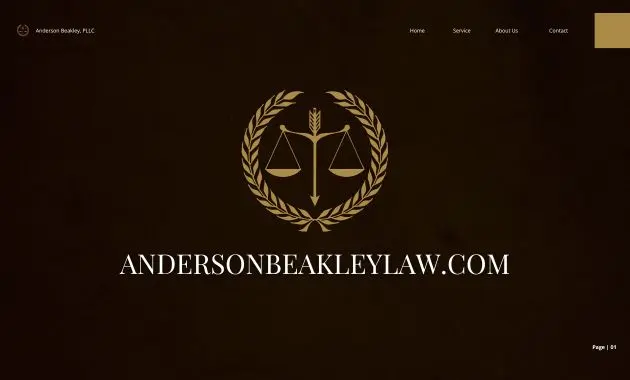Estate planning for blended families presents a unique set of challenges and considerations. The complexities of navigating multiple relationships, pre-existing legal arrangements, and potential conflicts over inheritance can make the process daunting. However, a well-crafted estate plan can provide peace of mind, ensure the protection of loved ones, and safeguard the family’s financial future.
This guide delves into the intricacies of estate planning for blended families, exploring key considerations, strategies for addressing potential conflicts, and the importance of seeking professional advice. It aims to provide a comprehensive understanding of the legal and financial aspects involved, empowering individuals to make informed decisions about their legacy.
Defining Blended Families
Blended families, also known as stepfamilies, are increasingly common in today’s society. They are characterized by the union of two adults who have children from previous relationships, forming a new family unit. This creates a unique dynamic with multiple parental figures, siblings from different biological parents, and a complex web of relationships.
Also Read
Estate planning for blended families requires careful consideration of all parties involved, especially when it comes to inheritance. A well-structured plan can minimize potential conflicts and ensure that the wishes of the deceased are carried out smoothly. However, even with thorough planning, the complexities of estate administration can arise, particularly when dealing with assets held in multiple names.
Navigating this process can be challenging, especially for seniors, which is why seeking professional guidance is crucial. Resources like Probate administration for seniors can provide valuable insights and support during this complex process. Ultimately, by proactively addressing these issues, blended families can create a clear and secure path for the future, ensuring that their legacy is protected and their loved ones are taken care of.
Distinguishing Characteristics of Blended Families
Blended families are distinguished from traditional nuclear families by several factors. One key difference is the presence of step-parents and step-siblings, who may not share a biological connection but are nonetheless part of the family. These relationships often involve navigating different parenting styles, expectations, and family traditions. Another crucial characteristic is the history that each individual brings into the blended family, including past relationships, traumas, and family dynamics.
Estate planning for blended families requires careful consideration of the unique dynamics involved. This can include navigating the complex legal aspects of ensuring a smooth transition of assets and property, particularly when dealing with pre-existing relationships and children from previous marriages. For instance, addressing the needs of an aging parent who wishes to remain in their home may require seeking legal counsel on Aging in place legal support to ensure their long-term care and comfort.
These considerations are essential to protecting the interests of all family members and ensuring a secure financial future for everyone involved.
This can lead to a range of emotions and challenges as individuals adjust to their new roles and responsibilities.
Estate planning for blended families often involves navigating complex relationships and ensuring fairness for all parties. A key consideration is the care of aging parents, which can be addressed through formal agreements. Family caregiver agreements can define responsibilities, compensation, and legal protections, ensuring clarity and minimizing potential conflicts within the blended family structure.
Types of Blended Families
Blended families come in many forms, each with its own unique set of circumstances.
Estate planning for blended families requires careful consideration of each member’s needs and wishes. This can be a complex process, particularly when it comes to ensuring the children’s future security. A Will and trust attorney can provide expert guidance in creating a plan that protects assets and minimizes potential conflicts, ensuring a smooth transition for everyone involved.
- Stepfamilies: The most common type of blended family, where one or both partners have children from a previous relationship. These families may include step-parents, step-siblings, and half-siblings.
- Co-parent families: In this type of blended family, parents who are not married or in a romantic relationship share custody and parenting responsibilities. They may or may not live together, but they work together to raise their children.
- Adoptive families: When one or both partners adopt children from a different family, they become part of a blended family. This can involve adopting a child as an individual or adopting a sibling group, creating a unique family dynamic.
Challenges in Estate Planning for Blended Families

Estate planning for blended families presents unique challenges due to the complexities of family dynamics, financial arrangements, and legal considerations. Navigating these challenges requires careful planning, clear communication, and a thoughtful approach to ensure the well-being of all family members.
Potential Conflicts in Estate Planning
The intricate relationships within blended families can create potential conflicts regarding inheritance and property distribution. These conflicts may arise from various factors, including:
- Differing expectations among family members regarding inheritance, especially when stepchildren are involved.
- Previous marriages and existing wills or trusts that may not adequately address the current family structure.
- Disagreements over the management and distribution of assets, particularly if there are significant differences in financial contributions or needs.
- Concerns about fairness and equity in distributing assets, especially when children from different marriages are involved.
Importance of Clear Communication and Open Dialogue
Open and honest communication is crucial for navigating these challenges effectively.
- Family members should engage in open dialogue to discuss their expectations, concerns, and preferences regarding estate planning.
- This communication should be facilitated by a neutral third party, such as a financial advisor or estate planning attorney, to ensure a constructive and respectful environment.
- Early and ongoing communication can help prevent misunderstandings and conflicts that may arise later.
Legal and Emotional Hurdles
Blended families often face legal and emotional hurdles that require careful consideration and planning.
Estate planning for blended families presents unique challenges, particularly when it comes to ensuring the financial security of both current and future generations. A key consideration is navigating the complexities of Medicaid eligibility, which can be significantly impacted by asset ownership and distribution. To effectively plan for these situations, consulting with a Medicaid planning attorney is crucial.
These legal professionals can help create a comprehensive estate plan that protects your assets while maximizing the potential for Medicaid benefits, ensuring the well-being of your loved ones both now and in the future.
- Legal Issues:
- Existing wills and trusts from previous marriages may need to be reviewed and updated to reflect the current family structure.
- State laws regarding inheritance and property distribution may vary, requiring expert legal guidance to ensure compliance.
- Legal complexities may arise regarding guardianship of minor children, especially when biological parents are not present.
- Emotional Challenges:
- Stepchildren may feel excluded or uncertain about their place in the family’s inheritance plan.
- Existing family dynamics can be strained by discussions about inheritance and future planning.
- Emotions like grief, resentment, and jealousy can complicate the estate planning process.
Key Considerations for Estate Planning
A comprehensive estate plan is essential for blended families, ensuring that all family members are adequately provided for and the wishes of the deceased are fulfilled. This plan should address the distribution of assets, guardianship of minor children, and the management of the estate.
Estate Planning Tools
Estate planning tools play a crucial role in safeguarding assets and realizing the wishes of the deceased. These tools include:
- Wills: A will is a legal document that Artikels how a person’s assets will be distributed after their death. It designates beneficiaries, appoints an executor, and can address guardianship of minor children. Wills can be updated as circumstances change.
- Trusts: Trusts are legal entities that hold assets for the benefit of designated beneficiaries. They can be used to manage assets, protect beneficiaries from creditors, and minimize taxes. Types of trusts include revocable living trusts, irrevocable trusts, and testamentary trusts.
- Powers of Attorney: A power of attorney grants someone the authority to make financial and legal decisions on behalf of another person. This can be useful if the individual becomes incapacitated or unable to manage their affairs.
- Health Care Directives: These documents Artikel an individual’s wishes regarding medical care in the event of incapacity. They can include a living will, which specifies treatment preferences, and a durable power of attorney for healthcare, which designates a healthcare proxy.
Pre-nuptial Agreements and Co-Parenting Arrangements
Pre-nuptial agreements and co-parenting arrangements can significantly impact estate planning for blended families.
Estate planning for blended families often involves navigating complex relationships and financial arrangements. One crucial aspect to consider is the potential need for long-term care, which may necessitate placement in an assisted living facility. Understanding the Assisted living facility regulations in your state is essential to ensure that your loved ones are adequately protected and their needs are met should they require such care.
This includes addressing issues like guardianship, financial management, and the distribution of assets in the event of incapacitation or death.
- Pre-nuptial Agreements: These agreements define the division of assets and liabilities in the event of divorce. They can also specify the distribution of assets upon death. It is crucial to consult with an attorney to ensure the agreement is legally sound and reflects the wishes of both parties.
- Co-Parenting Arrangements: These arrangements detail the responsibilities of each parent in raising the children. They can include provisions for child custody, visitation, and financial support. These arrangements should be considered in the estate plan, particularly regarding guardianship and inheritance.
Ensuring Fairness and Transparency
Fairness and transparency are paramount in estate planning for blended families. It’s about creating a plan that addresses the unique needs and relationships of all family members, fostering trust and minimizing potential conflicts. Transparency involves openly communicating the estate plan’s provisions, ensuring all parties understand the intended distribution of assets. This approach helps prevent misunderstandings and fosters a sense of fairness, ultimately contributing to a smoother transition of assets.
Addressing Potential Concerns, Estate planning for blended families
Addressing potential concerns about inheritance distribution and family dynamics is crucial for a successful estate plan. Open communication and clear documentation can help alleviate anxieties. Here are some strategies for addressing potential concerns:
- Open Dialogue: Encourage open communication among family members. A facilitator, such as a therapist or mediator, can help navigate difficult conversations and facilitate agreement.
- Clear Documentation: Clearly articulate the reasons behind specific inheritance provisions in the will or trust document. This transparency helps family members understand the rationale behind the decisions, reducing potential resentment.
- Equal Treatment: While fairness doesn’t necessarily mean equal distribution, consider equal treatment in terms of opportunity and consideration. For example, ensure all children have access to education or business opportunities, regardless of their biological relationship to the deceased.
Strategies for Balancing Interests
Balancing the interests of all family members requires careful consideration and strategic planning. Here are some strategies:
- Trusts: Trusts can be used to manage assets and distribute them according to the deceased’s wishes, even after their passing. This allows for flexibility in managing assets and ensuring fair distribution, even if family dynamics change over time.
- Life Insurance: Life insurance proceeds can be used to provide financial security for specific family members or to address specific needs. For example, a life insurance policy could be used to provide for a surviving spouse’s financial needs or to fund educational expenses for children.
- Separate Property: Clearly defining and documenting separate property can help prevent disputes regarding inheritance. This can include assets acquired before the marriage or gifts received during the marriage.
- Mediation: In cases where disagreements arise, consider mediation as a means to resolve conflicts and reach a mutually agreeable solution. A neutral third party can help facilitate discussions and explore alternative solutions.
Legal and Financial Advice
Navigating the complex landscape of estate planning for blended families necessitates expert guidance. Seeking advice from qualified legal and financial professionals is crucial to ensure your wishes are effectively implemented and your loved ones are protected.
Engaging with an estate planning attorney and a financial advisor offers numerous benefits. Estate planning attorneys possess the specialized knowledge and experience to craft legal documents that accurately reflect your intentions and comply with applicable laws. They can guide you through the intricacies of wills, trusts, powers of attorney, and other essential documents, ensuring that your assets are distributed according to your wishes.
Benefits of Legal and Financial Advice
The expertise of legal and financial professionals brings clarity and security to your estate planning process. They provide comprehensive support, ensuring your plan aligns with your unique circumstances and addresses potential challenges.
- Comprehensive Estate Planning: Estate planning attorneys specialize in crafting customized estate plans that address your specific needs and goals, encompassing wills, trusts, powers of attorney, and other relevant documents. They guide you through complex legal issues, ensuring your wishes are clearly articulated and legally sound.
- Asset Protection: Estate planning attorneys help you protect your assets, ensuring they are distributed according to your wishes and minimizing potential tax liabilities. They can advise on strategies to safeguard assets from creditors, lawsuits, and other potential risks.
- Minimizing Estate Taxes: Estate planning attorneys can help you minimize estate taxes by implementing strategies that reduce your taxable estate. They can advise on techniques such as charitable giving, trusts, and other tax-efficient methods to optimize your estate’s value.
- Conflict Resolution: Estate planning attorneys can help prevent conflicts among beneficiaries by clearly defining the distribution of assets and establishing clear guidelines for managing your estate. This can minimize potential disputes and ensure a smooth transition of your assets.
- Financial Planning: Financial advisors work closely with you to develop a comprehensive financial plan that aligns with your estate planning goals. They can assist with investment strategies, retirement planning, and other financial decisions that impact your estate’s value and distribution.
- Long-Term Planning: Both estate planning attorneys and financial advisors offer long-term planning support, helping you adjust your estate plan as your circumstances change. They can provide guidance on updates, revisions, and potential adjustments to ensure your plan remains relevant and effective.
Importance of Clear and Comprehensive Documentation
Clear and comprehensive documentation is the cornerstone of effective estate planning. It provides clarity, reduces ambiguity, and minimizes the potential for disputes.
- Wills: A will is a legal document that Artikels how you wish to distribute your assets after your death. It should be clear, concise, and unambiguous, specifying the beneficiaries, the specific assets to be distributed, and any conditions or restrictions.
- Trusts: Trusts are legal arrangements that allow you to transfer ownership of your assets to a trustee, who manages them for the benefit of designated beneficiaries. Trusts can be used for various purposes, such as protecting assets, reducing taxes, and providing for special needs beneficiaries.
- Powers of Attorney: A power of attorney is a legal document that grants someone else the authority to make financial and legal decisions on your behalf if you become incapacitated. It is crucial to have a durable power of attorney in place, especially if you are part of a blended family, to ensure that your financial affairs are managed according to your wishes.
- Living Will: A living will, also known as an advance healthcare directive, expresses your wishes regarding medical treatment in the event that you become unable to make decisions for yourself. It is essential for blended families to ensure that their wishes are respected and their loved ones are informed.
Addressing Specific Situations: Estate Planning For Blended Families

Estate planning for blended families requires a tailored approach to address the unique circumstances of each family. It is crucial to consider the specific needs and wishes of all parties involved, including spouses, children, and potential beneficiaries.
Estate Planning for a Blended Family with Children from Both Marriages
A blended family with children from both marriages presents a complex scenario for estate planning. The goal is to create a plan that ensures the fair distribution of assets while also considering the needs of all children. Here is an example of an estate plan for such a family:
Example Estate Plan:
- Will: The will should clearly Artikel the distribution of assets. For example, the couple could choose to divide their assets equally between their children, regardless of biological parentage. They could also establish a trust for their children, with specific provisions for how the assets are managed and distributed.
- Trusts: Trusts can be used to provide for specific needs or to protect assets for minor children. For instance, a trust can be set up to provide for the education of all children, regardless of their biological relationship.
- Life Insurance: Life insurance policies can be used to provide financial security for the surviving spouse and children. The beneficiaries of the policy should be clearly designated in the policy documents.
- Beneficiary Designations: It is essential to review and update beneficiary designations for retirement accounts, bank accounts, and other financial assets. This ensures that assets are distributed according to the couple’s wishes.
Navigating the complexities of estate planning for blended families requires careful consideration, open communication, and professional guidance. By understanding the unique challenges and opportunities presented, individuals can create a plan that ensures their wishes are honored, their loved ones are protected, and their legacy is preserved for future generations.



